With summer right around the corner, many cat owners-to-be that live in hot climates are wondering whether it is a smart idea to get a cat. After all, if we humans suffer so much when it’s too hot, how does it feel for these furry creatures?
Fortunately, cats usually thrive in warmer climates. But there are still some breeds that are better equipped to deal with hot temperatures than others. So, if you are interested in those breeds, check out this list of 12 hot climate cat breeds! Also, go have a look at our guide about caring for your cat in hot weather.
The Best Cat Breeds For Hot Climates
If you live in a place where summers are really hot, you should consider getting one of the cat breeds from this list. These breeds will find it much easier to survive scorching temperatures.
In the next few paragraphs, I will tell you more about 12 cat breeds that thrive in hot climates. As expected, many of the cat breeds from the list originated in places with hot temperatures. As a result, they are naturally equipped to survive and thrive in such conditions.
Some other breeds on this list are simply cats that have short or sparse furs. They can cool themselves more easily than breeds with thick and long furs. I listed these breeds in a random order, so don’t look at my selection as a best-to-worst list:
1. Abyssinian Cats
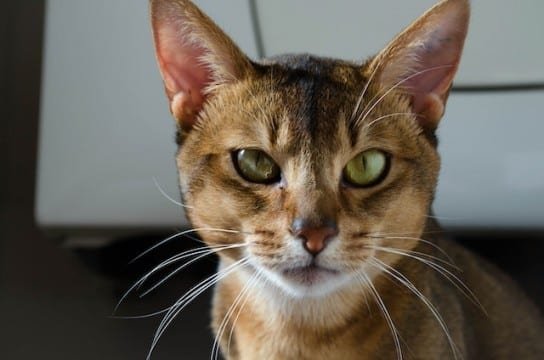
Abyssinian cats are one of the oldest cat breeds, appearing some 4000 years ago. They originated from Ancient Egypt, a country with a history of worshipping cats. Another thing for which Egypt is famous, apart from the pyramids, is certainly the fact that it is surrounded by the Sahara desert.
People and animals living there had to adapt to relentless desert temperatures, and Abyssinian cats certainly understood the assignment. Their large ears, short furs, and slender bodies help them stay cool in places where most other breeds would suffer from heat stroke.
2. Burmese Cats
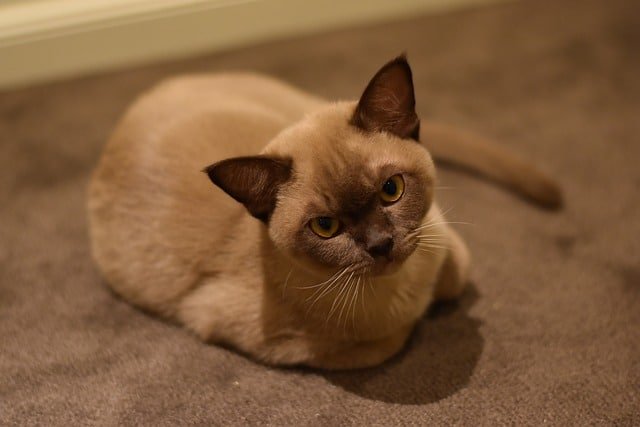
Just like their name suggests, Burmese cats originated in the territory of former Burma, modern Myanmar. Myanmar has a tropical to sub-tropical hot monsoon climate, a climate that can be really challenging to people and animals that aren’t used to it.
Of course, Burmese cats are certainly accustomed to this climate. If they can survive such a climate, they will certainly thrive in the US. Burmese cats might not have as large ears as Abyssinians. Still, they are well-equipped for hot climates with their short furs.
3. Singapura Cats
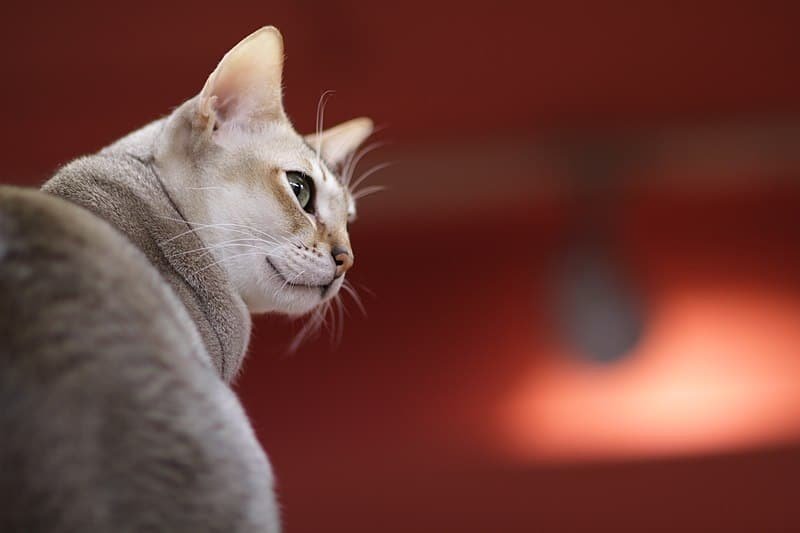
Despite having a controversial origin story, Singapura cats certainly originated in Singapore. This small city-state in SE Asia has a tropical climate with lots of humidity. Everyone knows that high humidity makes the hot temperatures even more noticeable. The native Singapore animals certainly know how to stand the heat.
Singapura cats are small felines with short furs and large ears. These physical characteristics make them perfect for hot climates. You should consider getting a Singapura cat if hot temperatures and high humidity are common where you live.
4. Cornish Rex Cats
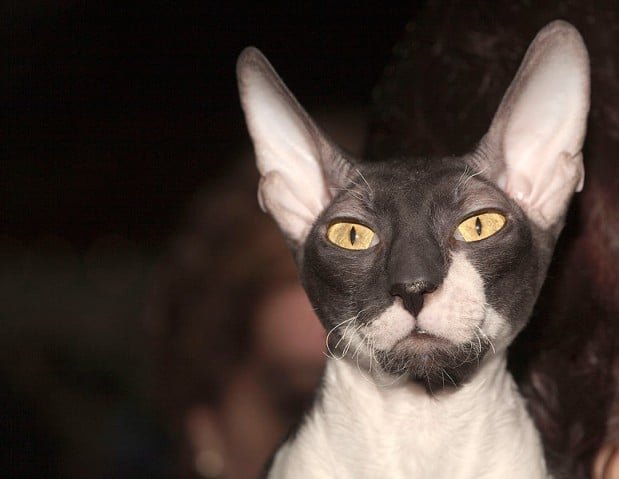
Cornish Rex cats differ from the previously mentioned breeds a bit because they don’t originate from a place with hot weather. As a matter of fact, their place of origin is the UK. This country is known for more moderate temperatures and not much sunlight during the year.
Still, their physical features make them another great choice for hot climates. Cornish Rex cats have sparse furs, large ears, and slender bodies. These are exactly the features that are desirable in hot weather.
5. Bengal Cats
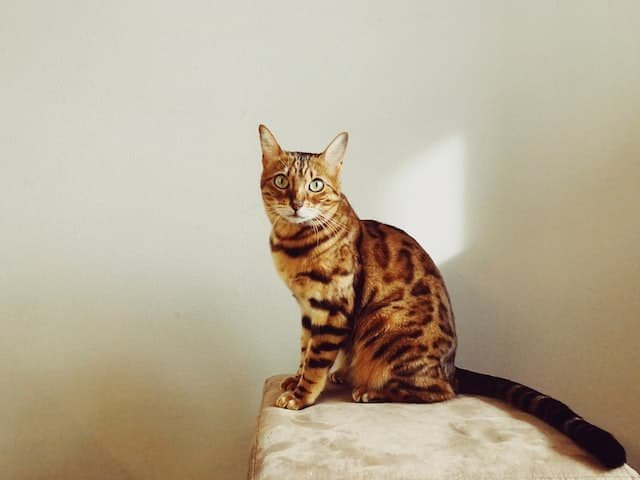
Bengal cats are unique among other choices in this article in a way that they are a product of outcrossing domestic shorthairs with Asian Leopard cats. They are practically mini versions of wild leopard cats, unlike other breeds from this list that are separated from their wild ancestors by hundreds, if not thousands, of years.
This makes them a bit larger than most breeds on this list. Still, despite their size and the fact that their ears are relatively small, Bengal cats are well-adjusted to high temperatures. Bengal’s not-so-distant ancestors, Asian leopards, thrive in the hot desert and tropical climate zones in Asia, and Bengal cats inherited this trait.
6. Egyptian Mau Cats

This is another natural and ancient breed that comes from Egypt. Egyptian Maus are just as ancient as the Abyssinian cats, and they had to be just as resilient to the harsh desert climate.
Egyptian Mau cats are slender, medium-sized cats with short furs perfectly adapted to high temperatures. Their ears are medium-sized to large, which is another advantage to surviving hot weather. The ears are also broad at their base, which further helps the cat cool itself.
7. Siamese Cats

This is another breed that originated in an Asian country with hot temperatures. The country in question is Thailand, formerly known as Siam. Thailand’s climate is tropical, with periods of heavy monsoons that bring moist and hot air from the Indian Ocean.
Siamese cats have short furs that lie close to the body. They are medium-sized and slender cats. Their ears are medium-sized, but Siamese cats are still quite successful in staying cool during hot temperatures.
Speaking of temperatures, did you know that the specific color point fur pattern of Siamese cats is correlated to the body temperature of these felines? It is actually a form of partial albinism that affects the enzyme responsible for melanin production.
As a result, Siamese cats have darker furs on their ears, faces, legs, and tails. All these are the body parts that are colder than the rest of the body.
8. Havana Brown Cats
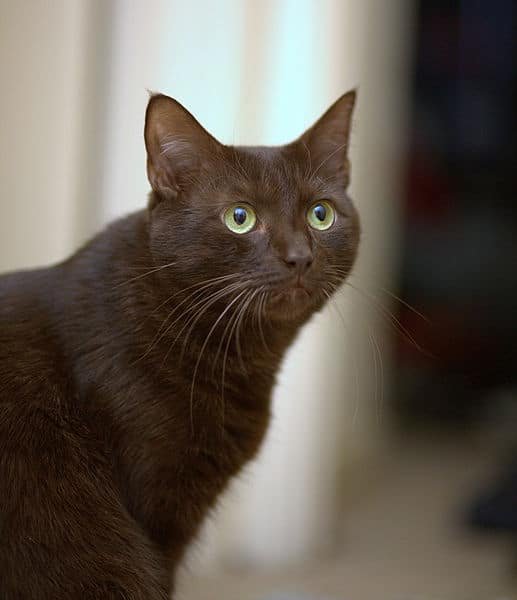
Don’t let the name fool you: these cats don’t come from Cuba (although it would be cool if they did). They are actually distantly related to Siamese cats, as both breeds come from Thailand, formerly known as Siam.
Modern Havana Browns are outcrosses between solid brown shorthairs (imported from Siam) and black domestic shorthairs, Russian Blue cats, and Siamese cats. As such, these are medium-sized and slender cats with short furs and large ears – perfect features for surviving high temperatures.
9. Birman Cats
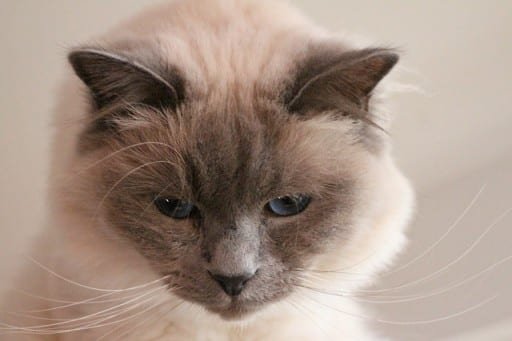
This is another breed that originated from former Burma, modern Myanmar. Just like Burmese cats, Birmans had to adapt to Myanmar’s tropical to sub-tropical monsoon climate, which makes them a good choice for pet owners that live in areas with high temperatures.
However, one thing sets Birman cats apart from Burmese cats and most other breeds on this list, and that’s their fur. Birman cats have medium to long furs that actually serve as perfect thermal insulations, keeping the body temperature to its normal value.
10. Balinese Cats
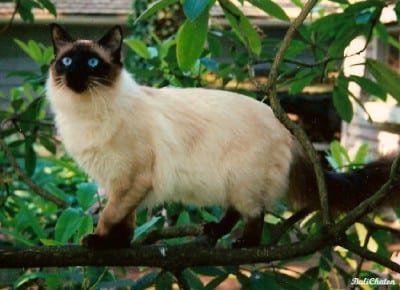
Many people confuse Balinese and Birman cats because they both look like long-haired versions of Siamese cats. Balinese cats actually originated from rare Siamese cats that developed long furs.
As such, Balinese cats have similar resistance to hot climates as Siamese cats, as both breeds originate from hot and humid Thailand. Don’t let the Balinese cat’s fur fool you; these cats use it as thermal insulation that keeps them cold during the summer and warm during the winter.
11. Khao Manee Cats
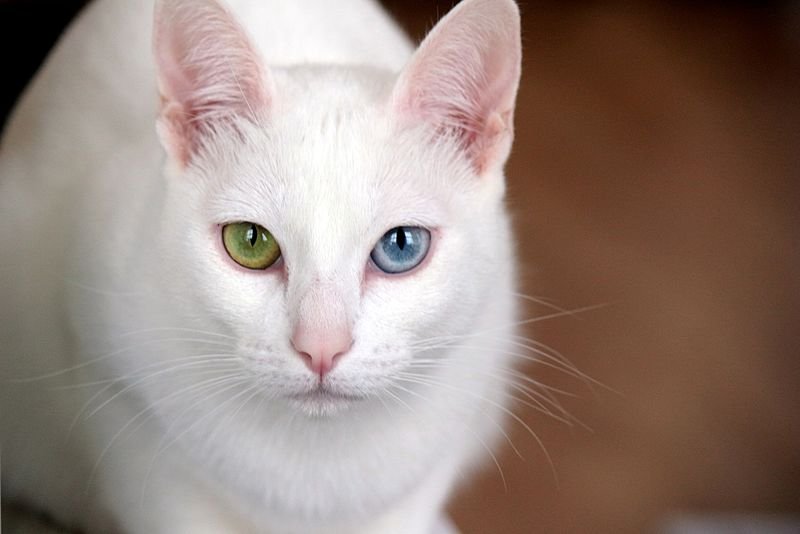
What? Another breed that’s coming from Thailand? Yes, that’s right, Khao Manee cats are Thailand’s precious jewels, considered royalty. But royalty can still get hot, especially in a hot and humid country such as Thailand. However, Khao Manee cats found a way to adapt to the hot climate.
First, they have short furs with sparse undercoats. Khao Manee’s furs are always white, which absorbs less sunlight than darker furs. Their ears are large and widely set apart, which helps these cats cool themselves more efficiently. Finally, they are small to medium-sized and slender, which is another advantage in a hot climate.
12. Lykoi Cats
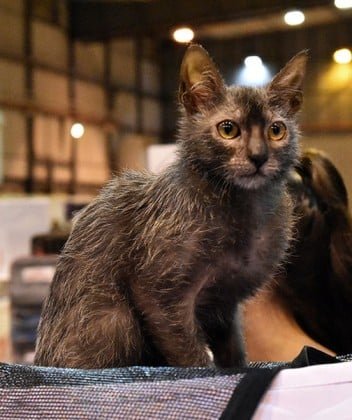
As a last (but certainly not the worst) pick, we have Lykoi cats. They aren’t as ancient or exotic as other breeds from this list, as they originated from Virginia in the early 2010s. Still, Virginia has a warm and humid, semi-tropical climate, similar to many Asian countries that gave us all these cool cat breeds.
Lykoi cats have a specific gene mutation that makes their fur extremely sparse. They also have slender and small or medium-sized bodies and large ears. As such, Lykoi cats have a perfect physique to survive hot summers all across the US, including the state of Virginia.
Why There Are No Hairless Breeds On the List?
One might wonder why I didn’t include any of the hairless cat breeds on this list, and that is a good question. After all, they have little-to-no fur, their ears are gigantic, and they are slender, medium-sized, or even small cats. A perfect physique for a hot climate, right?
Yes, but even though too much fur is a disadvantage in hot weather, too little or no fur at all is also bad. Apart from keeping the cat warm (or cold in the summer), the fur also serves as sunscreen.
Cats with no fur are similar to us humans, highly vulnerable to sunburns and all of the damage that can arise from too much exposure to UV rays. Their skins are also prone to being dry, which is another issue in hot weather.
You can consult a vet to find the best sun protection for your hairless cat, but it is obvious that they aren’t the best suitable for hot temperatures. So, if you live in a hot climate, avoid getting Sphynx, Donskoy, or Peterbald cats.
Of course, sunburns can be avoided if you keep your hairless cat indoors all the time, which is recommended for every other breed too. However, you will sometimes want to let your cat play outside (under your supervision), or you will want to take it for a walk, and in such situations, hairless cats will be in danger of sunburn.
Desirable Characteristics For Hot Climates
Now that I have gone over all of my top 12 picks, it is easy to see that some physical traits are more desirable than others when it comes to hot climates. Knowing which these traits are can help you pick a cat breed suitable for a hot climate even if it isn’t on this list.
So, which physical traits are the best for hot climates and why?
Short and Sparse Furs
The reason behind this one is obvious. Just like wearing fewer and shorter clothes is better for us humans during the hot summers, having shorter and sparser furs is better for cats.
Of course, some cats have long furs that serve as thermal insulators, which actually keep the cat cool, but short furs are still more suitable. Also, all breeds will shed the excess fur during warmer months, but still, having already short and not too thick furs is an advantage.
Large ears
Many desert-dwelling animal species, not only cats, develop large ears. Why is that so? Well, large ears also mean a larger surface area of exposed skin. Through that skin, animals lose excess heat and cool themselves down.
The larger the ears are, the more effective this process is, and that is why cats with larger ears are better equipped for hot weather.
Slender and small to medium-sized bodies
Did you notice that larger and chubbier people struggle with hot weather more than skinnier and smaller people? The same goes for cats. Larger bodies simply generate more heat, but they don’t have a proportionally more surface area through which they can lose that extra heat.
Cats that are small to medium-sized and also have slender, not overly stocky bodies deal with hot weather much better.
With these three things in your mind, you will be in a better position to choose a cat breed that will easily adapt to the hot weather. However, just choosing one such breed isn’t always enough to make sure your pet won’t be suffering from the excess heat.
Keep in mind that you still need to be aware of some cat care tips for hot climates. Global warming is slowly but steadily raising average temperatures. Even those animals that thrived in hot climates find it challenging to adapt to recent rises in summer temperatures.
Cats That Are Happier In Moderate or Cold Climates
Now that I have gone over cat breeds that thrive in hot climates, let me quickly mention some breeds that are the happiest when living in moderate or colder climates:
Of course, there are many other breeds that fit into this category, just like there are many other breeds that thrive in hot climates, but these are the most notable ones.
Conclusion
In general, cats respond well to high temperatures. However, some breeds are simply better equipped for hot climates than others. In most (but not all) cases, that is simply due to the fact that these breeds originated in countries with hot and humid weather.
So, if you live in a state that gets really hot during the summer and you want to get a cat, consider getting one of the 12 breeds that I picked for you. Alternatively, look for breeds with specific physical traits that are optimal for the hot weather. Good luck!
